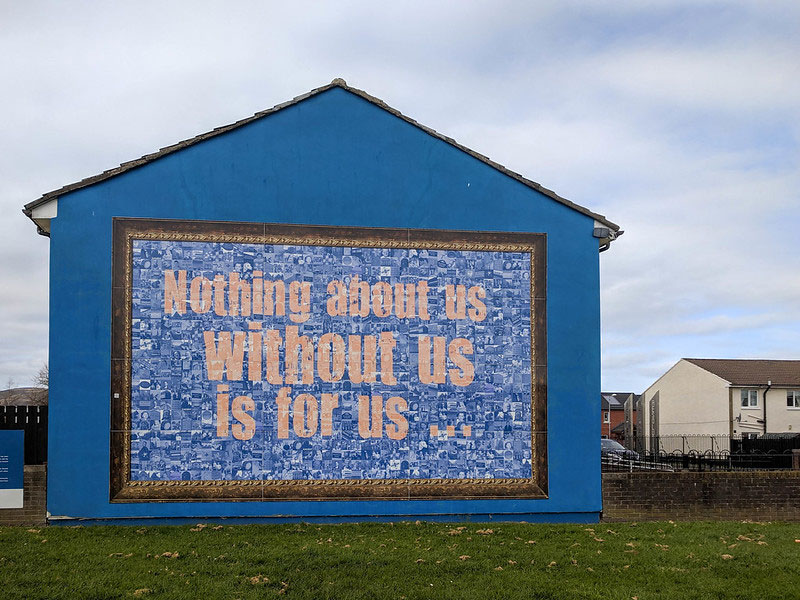It gives us great pleasure to provide a remarkable example of cohesive action between multiple parties in the public and private sectors in service to a vision for the present and future health of a community. Although this article is about the creation of an enabling environment for youth development, its lessons are useful in thinking about whole systems strategies in general.
Hampton, Virginia is a city of about 146,000 residents that in 1990 faced, straight on, the fairly standard though difficult question of long-term sustainable viability. Many of the brightest youth were leaving, and standard indicators of children’s well-being had declined throughout the 80s. It is not unusual to make a link between the education of an area’s youth and its economic development—but the direction the mayor and city council set off in from there was highly unusual. Starting with the simple query, “What do we need to do differently?” the town engaged approximately 5,000 adults and youth in a planning process. There emerged as a common theme the community’s need for continuous innovation and creativity.
Around the same time, the field of youth development was going through a shift in understanding of its practice. (See the articles by Johanna Wyn, page 12, and the Innovation Center, page 6.) The youth workers at Alternatives, Inc., a youth development organization in Hampton, had progressed from a treatment-oriented phase to a prevention-oriented phase, and were beginning to take the next step toward a development approach that worked with youth on a broader basis, built on their assets, brought youth and adults together in common endeavors, and involved youth early in the experience of making contributions to their community. This new approach dovetailed with a more widespread national adoption of an assets-based approach to community development.
The convergence of the Hampton city planning process and the development of new views on youth practice resulted in the creation of an environment that recognizes the development of young people as absolutely central to the development of the area. As a result, Hampton has developed an extraordinary set of partnerships between city government, nonprofits, schools, funding organizations and others.
The term “partnership” does not fully describe the synergy that exists. Cindy Carlson of the Coalition for Youth, a city government office, describes the effort as “achieving holographic (3D) fidelity.” No matter whom you talk to among the various players in government and community work, you will hear the same message and the same intention—the same belief that young people’s engagement is essential to the health of the community. Her office, which reports directly to the mayor and city manager, is charged with helping to maintain youth engagement in the central processes of local government.
This is what is called an enabling environment, and, as Carlson reports, it requires two main ingredients: infrastructure and climate. The climate has to do with having a widespread notion about and commitment toward the requirements of a healthy community—in particular, youth involvement in decision-making and civic action.
The infrastructure consists of the nuts and bolts that make the climate possible to sustain. Carlson reports that the whole system is dependent on nonprofits, especially Alternatives, Inc., that prepare young people to be involved in and act upon important aspects of community life. These organizations recruit, train and support young people to be part of decision-making in the community. They are engaged from policy-making to implementation, Carlson notes, but this is only made possible through the careful and nurturing work of youth development agencies.
Young people have plenty of opportunities for civic involvement through what she calls the “pyramid of opportunities” made available in the schools, in the neighborhoods and in government. This allows youth to be productively and progressively involved based on their skills, interests and the other factors at play in their lives. In this way they contribute, learn, grow and form important relationships from working directly on projects that may range from cleaning up parks all the way to shared leadership. Carlson points as examples to the youth leadership groups in each school and the two high school students who work as planners within the city’s planning department. (See Hampton Youth in Action Box for further detail.)
What does it take to maintain this whole system approach to youth development? Carlson emphasizes that capacity building of the institutions involved in carrying it out is vital. She believes that this is best accomplished in a learning community environment where people can work with one another on practice principles and what does and does not work on the ground. As a site for the National Training Institute’s BEST Initiative (Building Exemplary Training Systems for Youth Workers), Hampton’s nonprofit and other youth-serving managers meet regulalry to continuously build and improve the communication and support among youth workers.
She points out that the developmental work with adults in such an effort is as important as that with young people and recalls that, in the mid-90s, when they were working on the approach, young people had to redirect them in no uncertain terms. The youth formed their own research and planning process and brought their findings to the adults. The youth conducted a mapping exercise that revealed that some youth serving organizations in the area were unfriendly to youth. “We are not broken; you are trying to fix us,” she reports them saying, “start working on yourselves and start including us if you want to change things.”
Carlson worries about the limited degree to which nonprofits see themselves as responsible for helping to develop young people. “When I worked in a nonprofit I didn’t see myself necessarily as having a larger responsibility for ensuring the development of youth in that community—although I had enormous passion for my own work. I didn’t see myself as playing a role in the larger picture. But I think when you start framing it differently and recognize the extremely important role that nonprofits have in civic engagement, this role of preparing young people through actual engagement and skills development becomes more central to the whole agenda of community development no matter what field or funding source your organization is attached to.”
Sign up for our free newsletters
Subscribe to NPQ's newsletters to have our top stories delivered directly to your inbox.
By signing up, you agree to our privacy policy and terms of use, and to receive messages from NPQ and our partners.
Hampton is not the only city to have taken on youth development as a core interest. Indeed, the need to create enabling environments that support the entry of various excluded populations into civic life is an ongoing theme in the development of democracy. But as Carlson remarks, “All this needs to be guided by a common vision and enriched by continuous learning.”
Created in 1998, the Citywide Strategy for Youth Development (CSYD) initiative coordinated by the City of Boston’s Office of Community Partnerships is one way Boston supports an enabling environment. The CSYD conducts local research and disseminates information about youth development, it helps generate resources to fill service gaps and it provides opportunities for learning and action across all three sectors (business, government and nonprofit) of the city.
In March 1999 and 2001, CSYD convened teens, youth workers and researchers through the Boston Symposium on Youth Development to share practical applications of recent research. Other gatherings have showcased new initiatives related to youth development in the city.
Recently, CSYD published Everybody’s Out There For Youth, a two-volume report on youth development in Boston. The first volume shares the goals and objectives expressed by residents and community organizations that Boston must act upon in order to have a future where young people can thrive. The key finding was that the commitment of the mayor and other community and government leaders was necessary for youth development programs and practices to blossom in Boston. The second volume contains a resource and needs assessment on the major issues for youth development emerging from a retreat that convened 85 city officials and civic leaders.
CSYD has developed a Framework for Action as part of the first volume. Now neighborhood coalitions are working with it to develop their own neighborhood action plans, and nonprofit organizations use this resource to develop their grant applications.
In 2002, CSYD will launch a year-long public education campaign to help improve communication between parents and teens.
In 1996, the city planning department in Hampton, Virginia, hired two high school students to work as part-time city planners. These youth recommended that the city develop a youth commission with the same power as other city planning commissions. Their idea was adopted, and the city now has a youth commission comprised of 20 young people who are representative of a broad spectrum of youth in the city.
Youth city planners survey Hampton youth regarding issues being decided upon by the youth commission. The surveys, focus groups and public forums are designed to determine if the issue is really a problem in Hampton and to ask youth how the problem should be addressed. This youth input is used to provide policy recommendations to the youth commission. The youth commission then reviews the recommendations, makes revisions, and presents the revised policy to the city council or other governing organizations.
For example, at one point the city’s parks and recreation advisory board asked the youth commission to give their opinion on the development of a new park space in the city. The youth commission researched the issue and the history of the land and drew up a general-use plan. Another group of adults presented a plan to the board that called for the entire area to be softball fields. In contrast, the youth plan took into account park usage by a variety of community groups (not just softball players) and also protected the historic burial grounds and wetlands on the site. Despite opposition, the parks and recreation advisory board adopted the youth commission’s general-use plan.
Because of the success of the youth commission, youth members have since been added to other standing commissions including the neighborhood commission and the transportation commission. Principals in each of the secondary schools have adopted a youth advisory council to guide their work, and the school superintendent has developed his own powerful youth development council.
Source: Shepherd Zeldin, Annette Kusgen McDaniel, Dimitri Topitzes, and Matt Calvert. 2000. “Youth in Decision-Making: A Study on the Impacts of Youth on Adults and Organizations.” Innovation Center/Tides Center and University of Wisconsin Extension.













